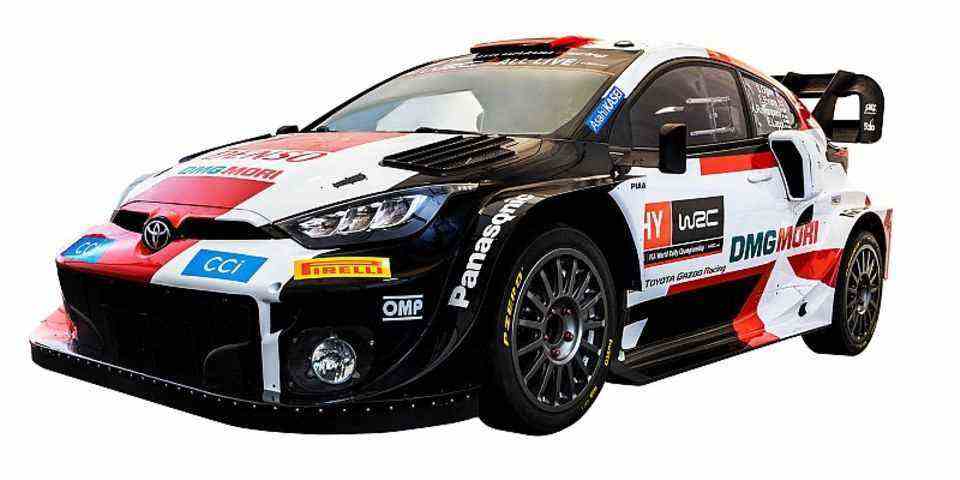WRC rally with hybrid power
Full energy
Toyota GR Yaris Rally1
© press-inform – the press office
The WRC World Rally Championship is entering the electric age. With around 515 hybrid hp, Ford, Toyota and Hyundai are fighting for the crown of rallying.
Electric vehicles will be used at the famous “Night of the Long Knives”, the highlight of the Monte Carlo Rally, which starts on January 20th, as well as at all subsequent rounds of the World Rally Championship. Hybridization is finding its way into the pinnacle of rallying. Excitement is guaranteed from the very first meter in the new WRC championship. The three combatants Ford, Toyota and Hyundai compete in the Rally 1 class with plug-in hybrid cars that fire over hill and dale with around 379 kW / 515 hp. Now, as with every change of regulations, the cards have been reshuffled. This e-power has even persuaded nine-time world rally champion Sébastien Loeb to get behind the wheel of the Ford Puma Hybrid Rally1.
When a superstar like Loeb puts on his helmet again, it must be a very special car. The regulations of the top Rally 1 series have been fixed for three years and provide for the combination of a 1.6 liter turbo engine with a PHEV module that delivers 100 kW / 136 hp. The electrical energy comes from a 3.9-kilowatt-hour battery that can be charged in around 25 minutes. Sounds pretty ordinary. It should, because such a drive train can also be found in vehicles that are street legal, so the fans can identify with the cars, and the costs are also limited. Ecology is the trump card when the steering wheel artists test their strength: consequently, the internal combustion engines use CO2-neutral fuel.
The drive train is trimmed for high performance. The focus is on the hybrid module, which is provided by the Schaeffler subsidiary Compact Dynamics. The electric motor whirls at a maximum of 12,000 revolutions per minute and the battery is sufficient for around 20 kilometers of purely electric driving. There are three driving modes available to drivers: In addition to the e-driving program, the two boost settings are particularly interesting. In the stage start mode, the electric power helps the cars to rocket off. The stage program, with which the pilot can initiate a three-second boost, is more exciting.
Here the strategists of the teams are in demand. Because the additional power must be used in doses. Simply banging away at it until the batteries are empty is not effective. So it’s time to economize with the 3.9 kWh. In addition, the cars recuperate when braking and when the driver takes their foot off the accelerator. In addition, not every special stage is the same length, which makes it even more difficult to economize on energy. The new regulations focus on energy. It is ideal when the car rolls over the finish line of a special stage and the batteries are empty. So the strategists will take a close look at the route to define the ideal extra boost. Every joule of energy that is still in the battery at the end of the stage is wasted.
However, there will be no push-to-accelerate button with which the driver fires off according to his own taste, rather the e-power of the hybrid module will be active with every acceleration. So the coordination between the combustion engine and the electric module is crucial. In addition, the strategists have to solve tricky tasks before each stage. The surface and the associated traction are very important: the boost can of course be more crisp on asphalt than on gravel. Logically, the weather plays a significant role: rain throws the whole plan upside down. Then there is the driving style of the pilot. Is he a rain artist? How does he handle the gas pedal? How about the brake? After all, recuperation should also shovel as much energy as possible into the storage system.
The cars are heavier than last season due to the extra weight of the electric module, but the extra power will compensate for this shortcoming. Good weight distribution and a lower center of gravity are possible thanks to the battery, which is housed in the rear of the vehicle. Attributes of a car that put a smile on the face of a professional driver. In any case, the racers look spectacular with their monstrous rear spoilers and the aerodynamic all-round planking. Here the technicians have another playground to give their pilots an advantage over the competition. The top class of the WRC is thus becoming more technical than before. More is also required of drivers. Simply stepping on the gas will no longer be enough in the future. Experience, strategic thinking and sensitivity are attributes that are at least as important as the often cited basic speed of a driver. No wonder that the old master Sébastien Loeb plunges into the adventure of rallying again.


